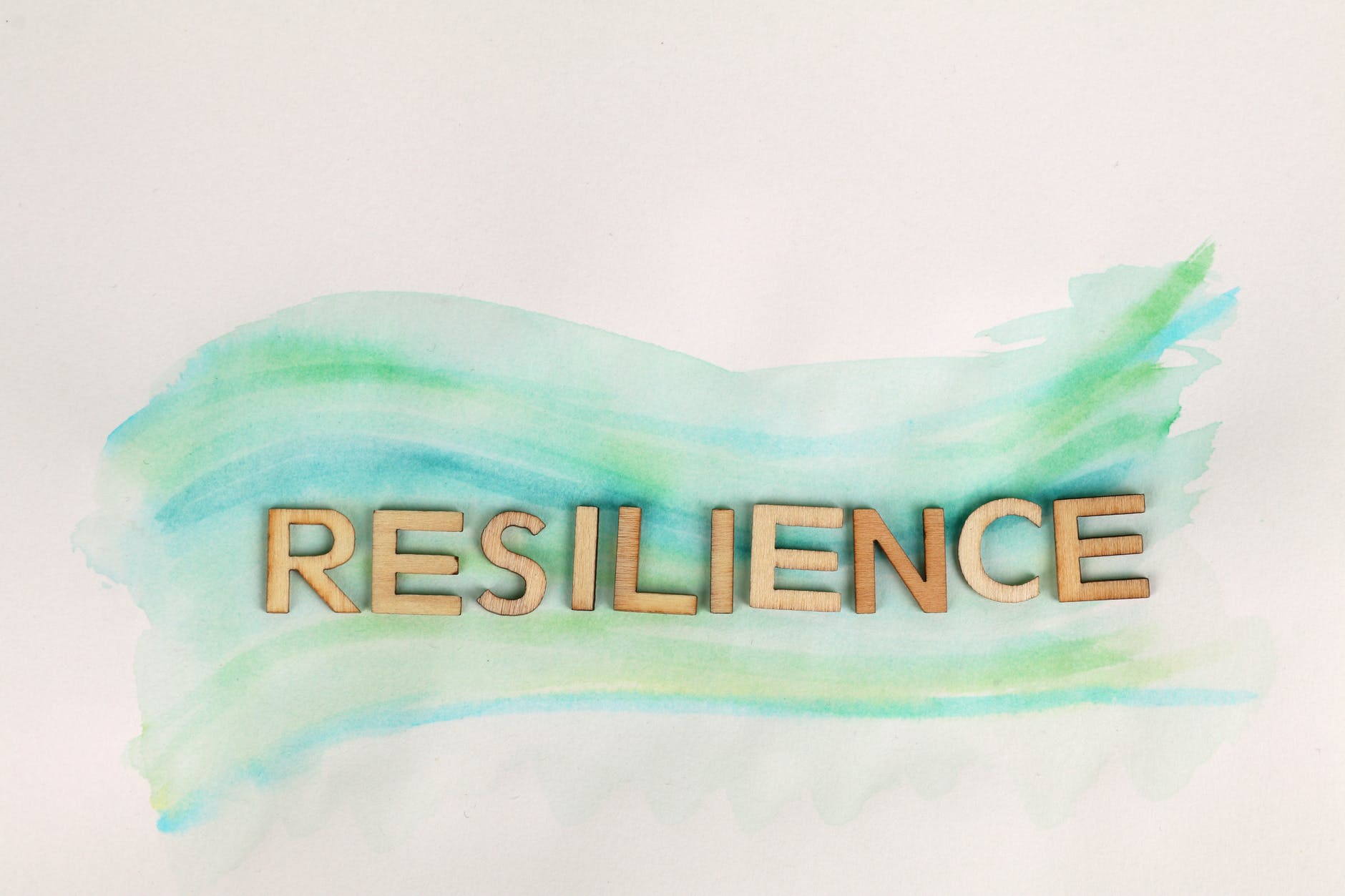Table of Contents
The global COVID pandemic has been raging for a little over a year now. People have experienced isolation, uncertainty, anxiety and loss. On top of that difficult changes in the home and work environment have stressed people in ways previously unknown to many. As a result, mental health is a relevant subject at the forefront of our current, unique situation. One study did a comprehensive review of the available studies on COVID-19 and mental health. The key finding was that subsyndromal mental health problems are a common response to the pandemic. With regard to work, people have been leaving or switching jobs to such an extent that some economists are dubbing this time “The Great Resignation”. More, now than ever, we need to pay attention to building resilience at work.
Resilience is the ability to bounce back to reach goals, even in the face of setbacks, challenges, and adversity. Although people have inborn resilient qualities, research suggests this trait is malleable. Resilient persons learn to successfully cope with traumatic experiences and avoid negative cycles associated with various risks. This process has two basic characteristics:
- Having a realistic and accurate perception of yourself and your environment / the negative event
- Responding in an ideal way when confronted with setbacks
The purpose of this series of posts on resilience is to (1) learn how to counter thoughts that cause us to have a distorted view of reality and (2) cultivate psychological resources that help us to respond optimally when faced with challenging circumstances.
Characteristics of Resilient People
- Can effectively manage their emotions
- Develop strong, healthy relationships
- Prioritize self-care
- Good problem solving skills
- Optimistic outlook
- Know their strengths and weaknesses
- Feel a sense of purpose
- Help and invest in others
- Can effectively manage stress
- Know what they can change and cannot change
- Look for opportunities in challenging situations
- Confident in their ability to reach goals
- Realistic sense of control
- Learn from mistakes
- Are team-players
- Can adapt well to change
- Sense of humor
- Committed
Building Resilience at Work: The Resilience Process in Action
Imagine you work in a high-stress environment such as nursing and experienced losing your temper in a difficult situation. This was a set-back that caused you to doubt your professionalism. Those who are more resilient would come to terms with what happened and not brush it under the rug. However, they would not be overly hard on themselves, realzing this could happen to anyone. Resilient persons would identify what triggered them. Furthermore, they would develop coping mechanisms to better manage similar situations in the future. One solution would be to briefly leave the room and take a few minutes to deeply inhale and exhale to alleviate stress. Another option would be to reach out to others and seek assistance in a timely way.
How to Build Resilience at Work

If resilience is malleable, how do you go about training it? Most interventions focus on three main dimensions:
1. Increasing resources – this includes learning new skills, e.g., communication skills and strengthening relationships.
2. Decreasing risk factors – this focuses mainly on decreasing stressors and sharpening one’s acumen for adapting to problems, i.e., one’s personal adaptation system. Examples include:
- Planning how to avoid or deal with potential obstacles in the future
- Training stress management skills
- Working out healthy coping mechanisms
- Improving problem solving skills
- Practicing self-compassion
- Doing mindfulness exercises
- Developing effective emotion regulation skills
3. Adopting a healthy perception of influence – this refers to the extent to which you feel capable of dealing with challenging situations or adverse events.
An effective way to increase your perception of influence is to identify your strengths, develop them and find ways to use them more. By doing so you become more confident in your ability to reach a desired goal or outcome based on your own actions.
Self-awareness is also crucial for having positive beliefs about your ability to overcome challenging situations. By being aware of your traits, behaviors and feelings, you are more likely to achieve a best possible outcome when confronted with adversity.
For example: you realize that you are criticizing yourself too much for making a mistake during a presentation. You decide to exercise self-compassion and adjust how you think about the mistake. Instead of something to get down on yourself about, you now see your mistake as a learning opportunity. As a result, you are energized to tackle the next presentation and are eager to implement what you learned.
Research shows that cognitive behavioral therapy (CBT) is related to increases in resilience. As is the example above, a major part of this form of therapy is to identify destructive thought patterns and change them.
An Example of Building Resilience at Work

After graduating with a master’s degree in Organizational Psychology, I landed my first job at a small consulting firm. The first few months were extremely challenging for me. I mean, I was used to long days. During my studies, I worked to get by and sometimes had two jobs. At the same time, I was involved with several extracurricular activities. So yeah, I was pretty busy.
Nevertheless, the adjustment to work life was tough. I was able to bear responsibility early on, but felt in over my head. Challenging clients, a heavy workload, long hours and having to learn a lot in a short time were stressful. I wanted to quit and look for something else. Furthermore, I didn’t feel equipped and looking back I really wasn’t. My biggest problem was probably speaking at eye level with clients. I was often intimidated by the C-levels and managers who were brazenly confident. As a result, they didn’t believe I could get the job done! So often I felt that either I would quit, or I would get fired for doing a bad job.
Eventually things did get better – my performance improved, and I learned a lot. How did this happen? Why didn’t I quit? Considering the topic of this article, I must say resilience played a part. Not only some portion of an inborn desire to never give up, but a resilience that was cultivated throughout my time at the company.
Building Resilience at Work through Targeted Interventions
Earlier I mentioned that resilience was mainly developed by increasing resources, decreasing risk factors, and adopting a healthy perception of influence. Looking back, I can see how these three approaches were present in my development at that time.
My boss spent a few weeks giving me 1:1 coaching on how to effectively communicate with clients and end the meetings on a positive note, even if I did not yet have the desired results. These sessions also targeted my self-confidence to help me realize that I was good at what I do and did a better job than I thought. I had a strong self-critic and my boss helped me to realize how this was hindering me. These sessions primarily increased my perception of influence and increased my resources.
Decreasing risk factors is something that I actively worked on, especially after I felt more confident about my own abilities. I began to prepare more for each meeting with my clients. I would run through different scenarios in my head and was prepared for different situations. Regarding the work load, I learned to give a signal when things were getting to heavy or when I needed more support. For example, a student employee took care of some tasks that could be delegated. I also began to take needed breaks. This helped me to improve my concentration and deal with stress.
The great thing about cultivating a personal resource is that what you learn is part of you. It’s not like learning a skill that becomes antiquated. Such learnings are transferrable across settings and scenarios. The skills that I acquired during this time have definitely helped me in other areas. Looking back, I am glad I didn’t throw in the towel. I would have missed out on some valuable lessons.
Summary

Resilience is the ability to bounce back to reach goals, even in the face of setbacks, challenges, and adversity. With the effect that the pandemic has had on the workforce, building resilience at work is something we should focus on. Although there are inborn resilient qualities, this trait can be cultivated.
The psychology literature identifies many ways to bolster and train resilience. Viable options include:
- Cognitive behavioral therapy
- Learning effective problem solving
- Developing coping mechanisms
- Increasing self-efficacy
- Increasing optimism
- Growing and implementing strengths
- Cultivating meaningful relationships
- Exercising self-compassion
- Developing empathy
- etc.
In the next post, we will cultivate resilience by learning to identify destructive thought patterns and change them. Looking forward to it, see you soon!






8 Comments
Taking Care of Yourself for More Resilience and Better Performance (PsyCap 17) - Work | Grow | Thrive
January 29, 2022 at 4:41 pm[…] comes to mind when you think about resilience? The most common thoughts probably include things like bouncing back, dealing with adversity and […]
How to Overcome an Obstacle with 9 Great Tips - Work | Grow | Thrive
January 16, 2022 at 2:27 pm[…] how we decide to respond in a particular situation. If we respond optimally, we can emerge more resilient than before. However, it is also possible to fall into a negative downward spiral, get blocked and […]
Why Should I Set Goals For Myself? What's the Big Deal? - Work | Grow | Thrive
October 30, 2021 at 6:53 pm[…] It feels really good when you work towards something and reach it. Experiences like finishing a cool project or mastering a skill reinforce your belief in your ability to succeed. Hence you become more confident, committed, persevering, and resilient. […]
What are Practical Steps to Increasing Resilience? - Work | Grow | Thrive
September 26, 2021 at 9:39 am[…] Resilience is the ability to bounce back to reach goals when faced with setbacks, challenges, and adversity. Although people have inborn resilient qualities, research suggests this trait is malleable. This means we can all become more resilient! […]
How Do You Stay Positive in the Midst of Adversity? - Work | Grow | Thrive
September 14, 2021 at 3:51 pm[…] thing and experience vastly different outcomes. One may barely get by while the other emerges more resilient than ever before. One key to thriving even in the midst of challenges is to maintain an optimistic […]
Overcome Limiting Beliefs That Kill Your Progress (PsyCap 16) - Work | Grow | Thrive
September 11, 2021 at 4:17 pm[…] of the things that make resilient people resilient is that they know themselves quite well. Of course, it is not possible to see yourself in […]
Cognitive Distortions are Opportunities to Build Resilience (PsyCap 13) - Work | Grow | Thrive
June 22, 2021 at 3:01 pm[…] for clinical diagnosis, they can still limit us from reaching our potential and becoming more resilient individuals. Therefore, an important skill for building resilience is the ability to identify such […]
How to Use CBT to Bolster Resilience (PsyCap 10) - Work | Grow | Thrive
May 2, 2021 at 4:33 pm[…] the last article we introduced the PsyCap resource of resilience. This refers to the ability to bounce back to reach goals, even in the face of setbacks, […]